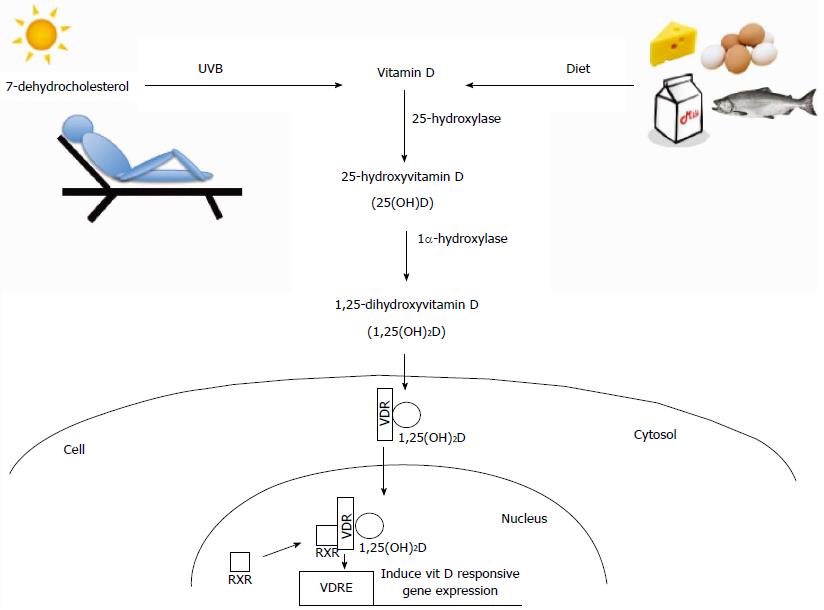Copyright
©The Author(s) 2016.
World J Gastroenterol. Jan 21, 2016; 22(3): 933-948
Published online Jan 21, 2016. doi: 10.3748/wjg.v22.i3.933
Published online Jan 21, 2016. doi: 10.3748/wjg.v22.i3.933
Figure 1 Vitamin D metabolism.
Vitamin D can be obtained either through exposure to sunlight where ultraviolet B (UVB) interaction in the skin converts 7-dehydrocholesterol to vitamin D or through absorption from the diet. Vitamin D must undergo several hydroxylation steps to become an active metabolite, 1,25-dihydroxyvitamin D. The first hydroxylation step occurring mainly in liver by 25-hydroxylase produces 25-hydroxyvitamin D, the main circulating form of vitamin D. The second hydroxylation step catalyzed by 1α-hydroxylase occurs in many target tissues including kidney, intestinal epithelial cells and immune cells and generates the active form of vitamin D, 1,25-dihydroxyvitamin D. This latter form of vitamin D is a ligand for a transcription factor, vitamin D receptor (VDR), which is present in most cell types. VDR bound with 1,25-dihydroxyvitamin D translocates to the nucleus where it dimerizes with retinoid X receptor (RXR). The dimers have the ability to activate transcription of various genes containing a specific promoter region known as vitamin D response elements (VDRE) by binding to the region and recruiting transcriptional machinery.
- Citation: Meeker S, Seamons A, Maggio-Price L, Paik J. Protective links between vitamin D, inflammatory bowel disease and colon cancer. World J Gastroenterol 2016; 22(3): 933-948
- URL: https://www.wjgnet.com/1007-9327/full/v22/i3/933.htm
- DOI: https://dx.doi.org/10.3748/wjg.v22.i3.933









